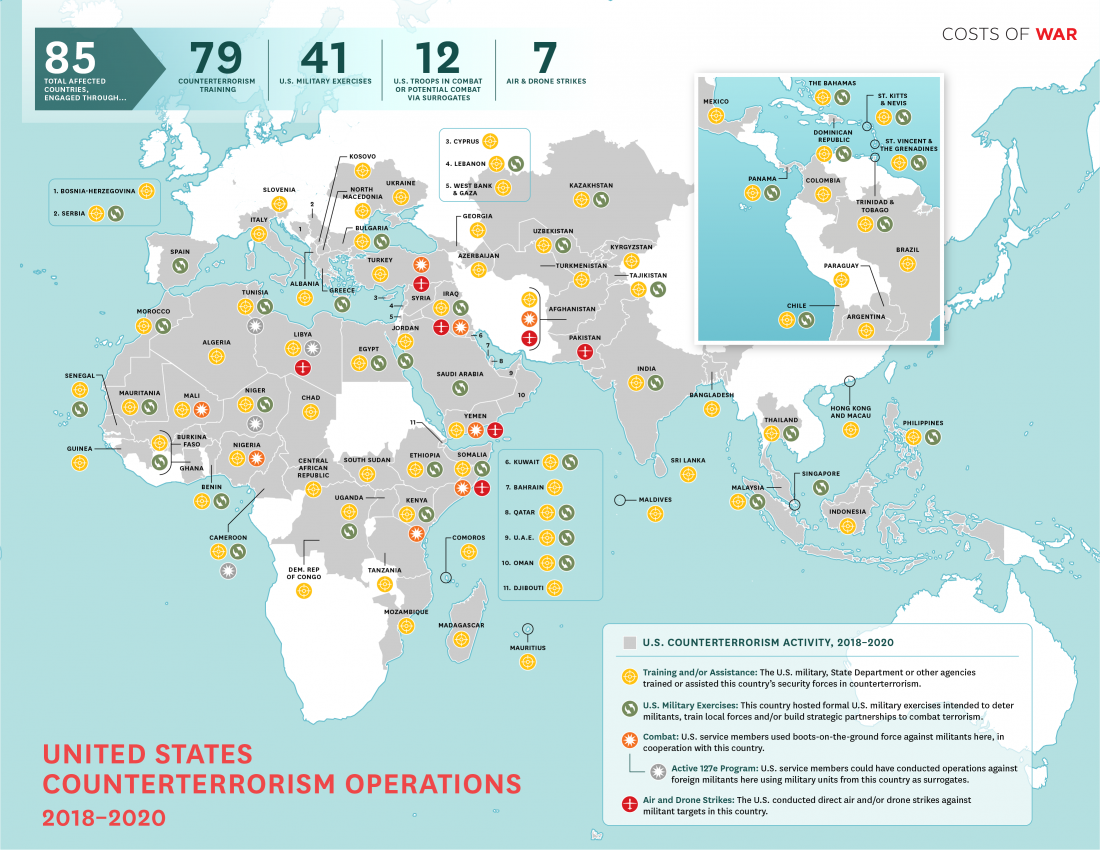The 2001 Authorization for Use of Military Force: A Comprehensive Look at Where and How It Has Been Used

Between 2018 to 2020, the United States government undertook what it labeled “counterterrorism” activities in 85 countries. Stephanie Savell (2021).
This analysis of where the 2001 Authorization for Use of Military Force (AUMF) has been used to justify U.S. counterterrorism activities reveals a lack of government transparency and oversight. Prior Costs of War research showed that between 2018-2020, the U.S. undertook what it labeled “counterterrorism” operations in 85 countries. Of those operations, presidents must report on situations where U.S. troops are involved in “hostilities” or “imminent hostilities.” This paper shows the 2001 AUMF has been cited to justify counterterrorism operations in 22 countries, but it is not the only legal authority under which counterterrorism operations are being carried out.
Much of the executive branch’s reporting lacks geographic specificity, so the 2001 AUMF has sometimes been used to justify operations in regions rather than countries. This being the case, in Mali and Tunisia there have been clear evidence of hostilities but these countries do not appear in executive branch 2001 AUMF citations. There are several other cases of combat and airstrikes since 2001 that various presidents have not reported to Congress.
The analysis also found:
- The executive branch has consistently used vague language to describe the locations of operations, failed to accurately describe the full scope of activities in many places, and in some cases simply failed to report on counterterrorism hostilities.
- Executive branch reporting to Congress in reference to the 2001 AUMF failed to specify the number of operations conducted in each of the 22 countries involved. In many locations of U.S. military activities, the executive branch has inadequately described the full scope of U.S. actions.
- In other cases, the executive branch has reported on “support for CT operations,” but has not acknowledged that troops were or could be involved in direct combat with militants, as in Niger in 2017, when four U.S. service members were killed in an ambush as they attempted to carry out a raid on a militant compound (the AUMF was cited only after this incident came to light).

